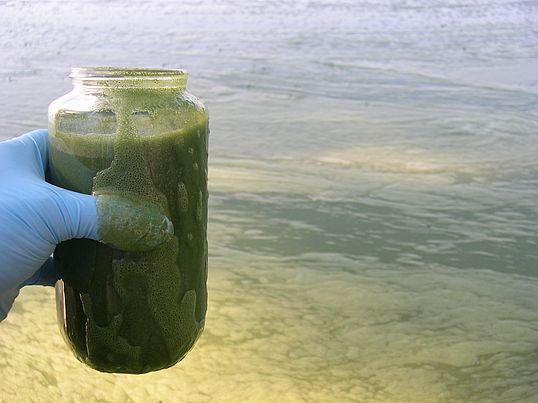Pollution Trade-offs

February 2010
My first car was a gray AMC Concord. Gray aptly described my mood when it made one of its frequent trips to the mechanic. On one of those occasions I was complaining to my father about how long it took to do the work. “Son,” he said, “you can have the work done well, done cheap, or done fast. Pick two.” No work is perfect; trade-offs need to be accepted.
Trade-offs exist with regard to water pollution too. The severity of different problems varies within Lake Champlain from lake segment to lake segment. Anglers are warned that eating too much fish can be bad for their health because of high mercury levels in the fish, and the mercury levels are likely to be highest in fish from the cold clear waters of the Main Lake. Algae blooms plague northern bays occasionally leading to beach closures. Invasive weeds infest the southern lake making boating and swimming difficult. Each part of the lake has issues that raise concern. However what people in one part of the lake perceive as a problem can actually minimize the other potential problems.
For example, some of the conditions that lead to the clearest water also lead to greater accumulation of mercury in fish. More acidic lakes tend to be clearer because fewer algae species can live in them. However, acidity creates conditions favorable for mercury to change from its elemental form to methyl-mercury, the type most easily assimilated into fish tissue. The mercury that enters lakes after falling from the sky appears to be more readily converted into methyl-mercury than that which runs off the landscape. Although emissions of mercury in the United States have declined since their peak in the 1970s, they are still about three times higher than they were before people began burning coal and their garbage, the two main sources today.
Once in a lake, mercury is first absorbed by algae, which can show cell concentrations five to six orders of magnitude higher than what exists in the surrounding water column. Invertebrates that eat the algae accumulate mercury from each algae cell they eat. Fish that eat the invertebrates further accumulate mercury. When there are fewer algae, a higher percentage of them get eaten so more of the mercury that falls from the sky enters the food chain.
On the other hand, when algae concentrations are high, mercury concentrations in fish tend to be low. When there are lots of algae, there isn’t necessarily more mercury. Therefore, the mercury available is divided between more algal cells, and each individual cell has less. Furthermore, more of the algae goes uneaten. That means when invertebrates eat the algae, they accumulate less mercury per unit of food, and when fish eat the invertebrates they in turn receive less mercury per unit of food. Algae minimize the impacts of mercury pollution.
Similarly, when aquatic weed densities are high, algae blooms are less frequent. For the last five years, the Lake Champlain Committee has maintained a volunteer algae monitoring station in the South Lake, collecting 46 samples in that time. There has never been an algae bloom noted at the site. Weed growth in the South Lake is extensive. The weeds provide hiding places for little invertebrates, keeping them safe from fish predators. These invertebrates then eat algae and perhaps prevent blooms from forming. The weeds actually protect the area against algae blooms.
Algae and weeds are visible and obvious. Mercury in fish is not, yet public opinion surveys suggest that not being able to eat the fish from the lake is the environmental issue that concerns the most people. Since the Main Lake is where most people recreate, perhaps concerns about fish reflect the fact that many of the lake’s users are insulated from the affects of algae blooms and weeds. In any case, lake users need to accept trade offs in what we see as the problems of the lake, just as I had to accept trade-offs in the repair of my car between quality, cost, and speed.
Lake Look is a monthly natural history column produced by the Lake Champlain Committee (LCC). Formed in 1963, LCC is the only bi-state organization solely dedicated to protecting Lake Champlain’s health and accessibility. LCC uses science-based advocacy, education, and collaborative action to protect and restore water quality, safeguard natural habitats, foster stewardship, and ensure recreational access.
Get involved by joining LCC using our website secure form (at www.lakechamplaincommittee.org), or mail your contribution (Lake Champlain Committee, 208 Flynn Avenue - BLDG 3 - STUDIO 3-F, Burlington, VT 05401), or contact us at (802) 658-1414, or lcc@lakechamplaincommittee.org for more information.